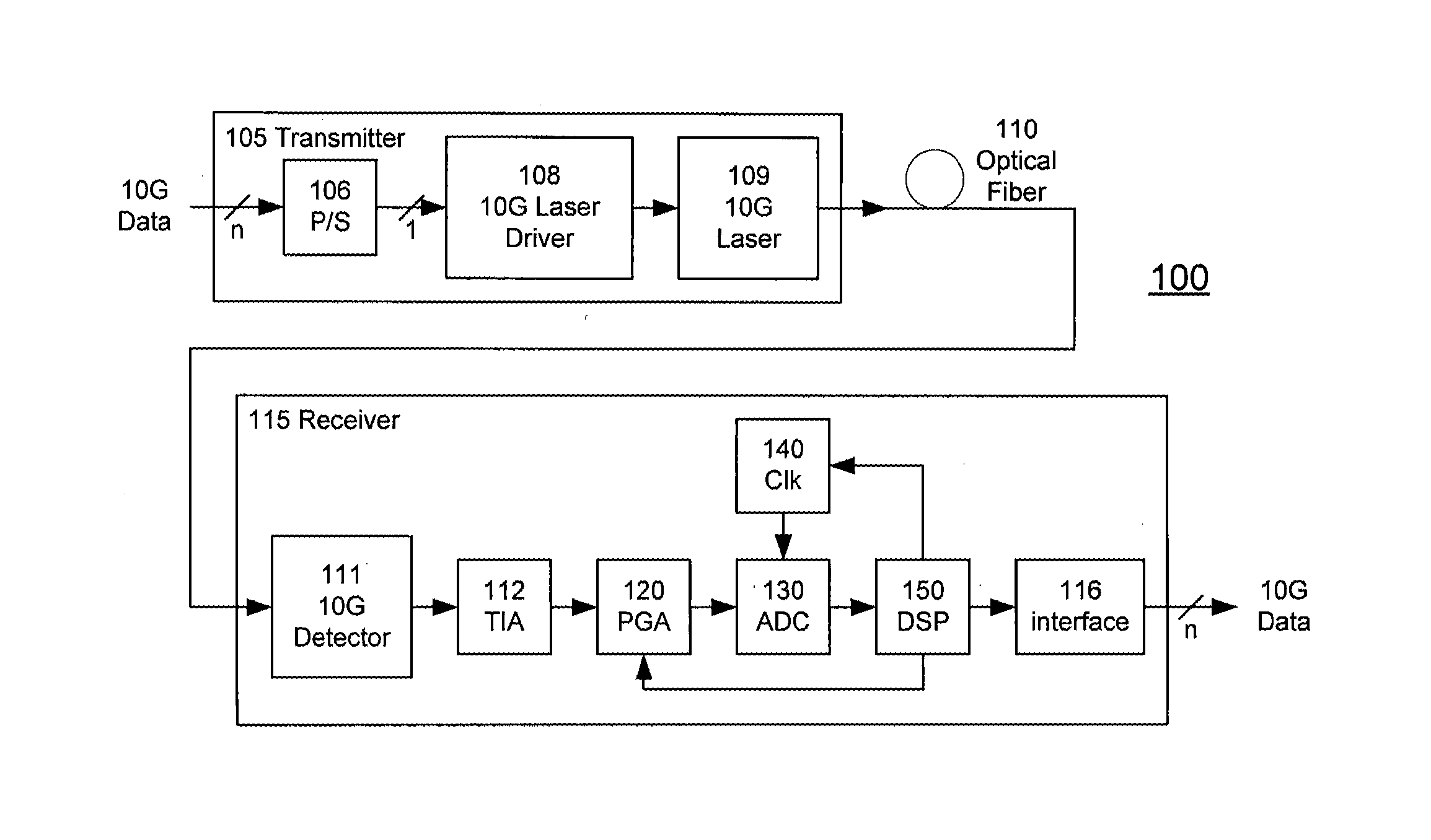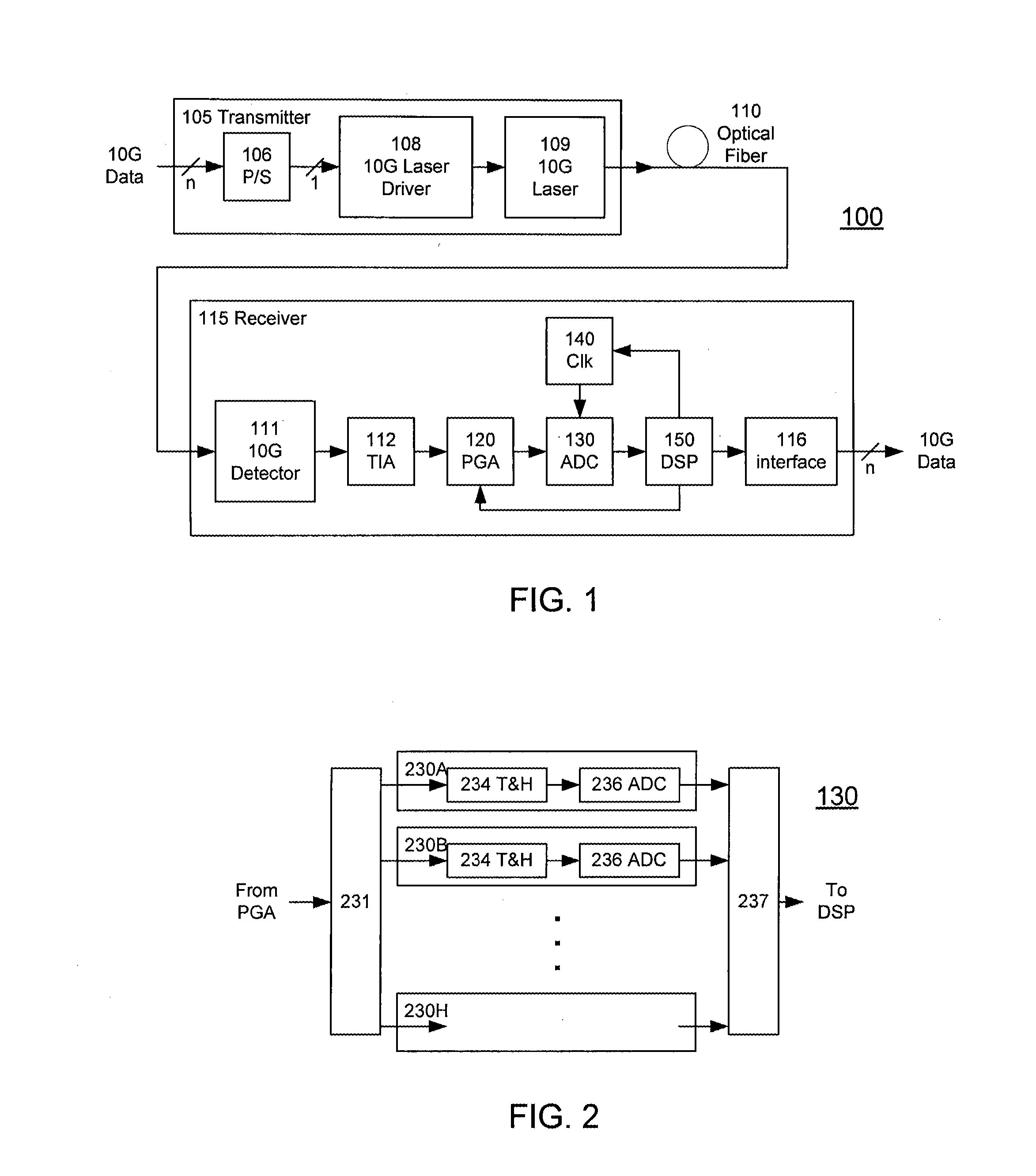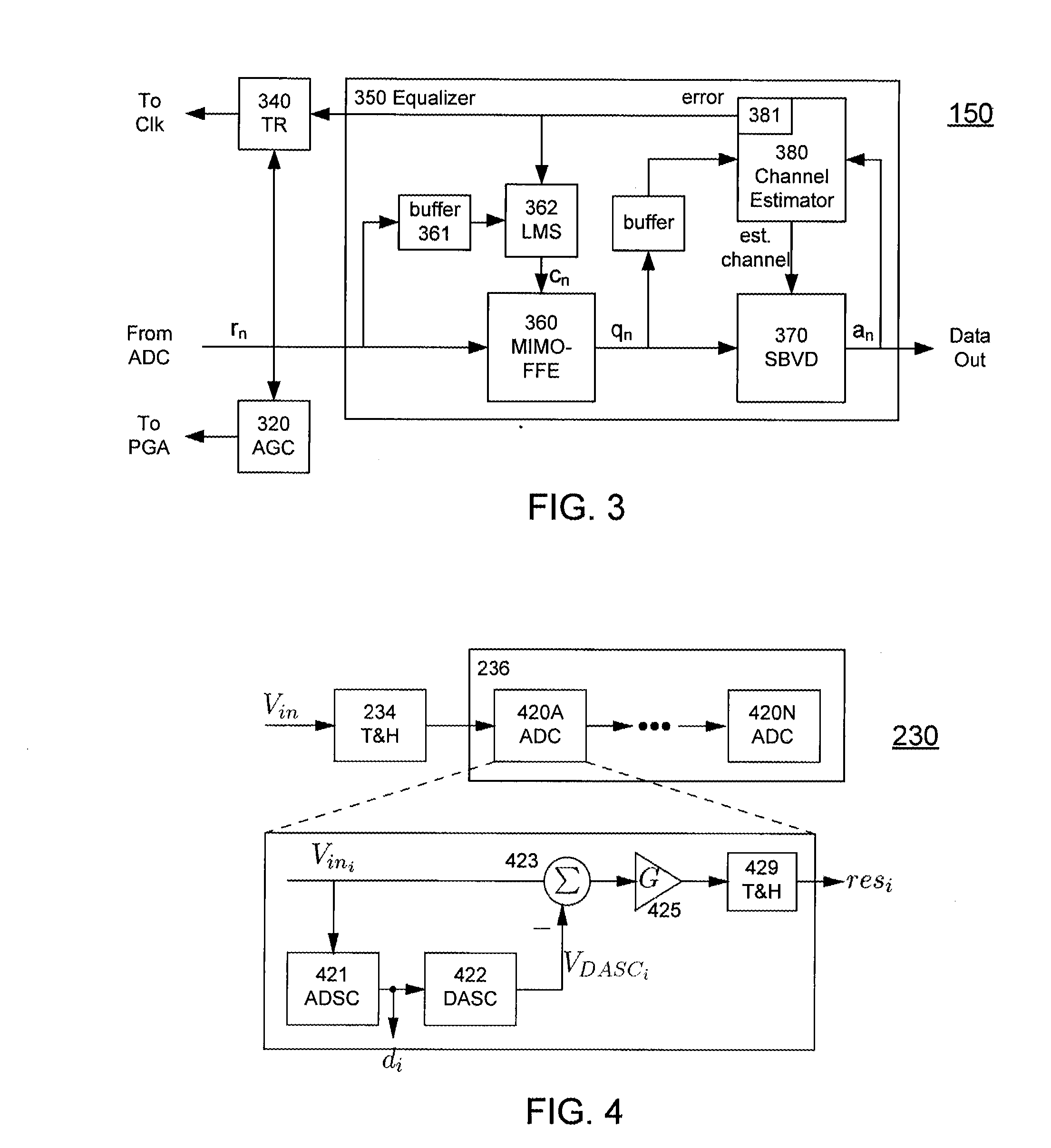High-Speed Receiver Architecture
a receiver and high-speed technology, applied in the field of high-speed data communication, can solve the problems of difficult and expensive to build with the required resolution, many challenges to implement 10g systems, and various other components in the receiver may also be difficult or expensive to build at this speed of operation
- Summary
- Abstract
- Description
- Claims
- Application Information
AI Technical Summary
Benefits of technology
Problems solved by technology
Method used
Image
Examples
Embodiment Construction
[0041]FIG. 1 shows an optical fiber communications link 100 according to the invention. The link 100 includes a transmitter 105 coupled through optical fiber 110 (the communications channel) to a receiver 115. A typical transmitter 105 may include a serializer or parallel / serial converter (P / S) 106 for receiving data from a data source on a plurality of parallel lines and providing serial data to a laser driver 108. The driver 108 then drives a laser source 109, for example a 1310 nm Fabry-Perot or DFB laser. The laser source 109 launches the optical waveform carrying the digital data on optical fiber 110.
[0042]On the receive side, a typical receiver 115 includes a photodetector 111 for receiving and detecting data from the optical fiber 110. The detected data is typically processed through a transimpedance amplifier (TIA) 112. A programmable gain amplifier (PGA) 120 applies a variable gain to the electrical analog signal. The resulting electrical signal is converted to digital form...
PUM
 Login to View More
Login to View More Abstract
Description
Claims
Application Information
 Login to View More
Login to View More - R&D
- Intellectual Property
- Life Sciences
- Materials
- Tech Scout
- Unparalleled Data Quality
- Higher Quality Content
- 60% Fewer Hallucinations
Browse by: Latest US Patents, China's latest patents, Technical Efficacy Thesaurus, Application Domain, Technology Topic, Popular Technical Reports.
© 2025 PatSnap. All rights reserved.Legal|Privacy policy|Modern Slavery Act Transparency Statement|Sitemap|About US| Contact US: help@patsnap.com



